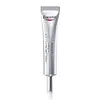What's inside
What's inside
 Key Ingredients
Key Ingredients

 Benefits
Benefits

 Concerns
Concerns

No concerns
 Ingredients Side-by-side
Ingredients Side-by-side

Octocrylene 2%
UV AbsorberWater
Skin ConditioningGlycerin
HumectantCaprylyl Methicone
Skin ConditioningMethyl Methacrylate Crosspolymer
Pentylene Glycol
Skin ConditioningSodium Acryloyldimethyltaurate/Vp Crosspolymer
Emulsion StabilisingBenzyl Alcohol
PerfumingGlyceryl Stearate
EmollientChlorphenesin
AntimicrobialSodium Hyaluronate
HumectantDisodium EDTA
Parfum
MaskingSodium Hydroxide
BufferingBlue 1 Lake
Cosmetic ColorantCI 16035
Cosmetic ColorantWater
Skin ConditioningGlycerin
HumectantButylene Glycol Dicaprylate/Dicaprate
EmollientDiethylamino Hydroxybenzoyl Hexyl Benzoate
UV FilterMethylpropanediol
SolventSynthetic Beeswax
Emulsion StabilisingBehenyl Alcohol
EmollientEthylhexyl Triazone
UV AbsorberHydrogenated Coco-Glycerides
EmollientOctyldodecanol
EmollientStearyl Alcohol
EmollientCetyl Palmitate
EmollientGlyceryl Stearate Citrate
EmollientGlycine Soja Germ Extract
EmollientAluminum Starch Octenylsuccinate
AbsorbentBis-Ethylhexyloxyphenol Methoxyphenyl Triazine
Skin ConditioningDimethicone
EmollientSodium Hyaluronate
HumectantMethyl Methacrylate Crosspolymer
Trisodium EDTA
Carbomer
Emulsion StabilisingEthylhexylglycerin
Skin Conditioning1,2-Hexanediol
Skin ConditioningPhenoxyethanol
PreservativeWater, Glycerin, Butylene Glycol Dicaprylate/Dicaprate, Diethylamino Hydroxybenzoyl Hexyl Benzoate, Methylpropanediol, Synthetic Beeswax, Behenyl Alcohol, Ethylhexyl Triazone, Hydrogenated Coco-Glycerides, Octyldodecanol, Stearyl Alcohol, Cetyl Palmitate, Glyceryl Stearate Citrate, Glycine Soja Germ Extract, Aluminum Starch Octenylsuccinate, Bis-Ethylhexyloxyphenol Methoxyphenyl Triazine, Dimethicone, Sodium Hyaluronate, Methyl Methacrylate Crosspolymer, Trisodium EDTA, Carbomer, Ethylhexylglycerin, 1,2-Hexanediol, Phenoxyethanol
 Reviews
Reviews

Ingredients Explained
These ingredients are found in both products.
Ingredients higher up in an ingredient list are typically present in a larger amount.
Glycerin is already naturally found in your skin. It helps moisturize and protect your skin.
A study from 2016 found glycerin to be more effective as a humectant than AHAs and hyaluronic acid.
As a humectant, it helps the skin stay hydrated by pulling moisture to your skin. The low molecular weight of glycerin allows it to pull moisture into the deeper layers of your skin.
Hydrated skin improves your skin barrier; Your skin barrier helps protect against irritants and bacteria.
Glycerin has also been found to have antimicrobial and antiviral properties. Due to these properties, glycerin is often used in wound and burn treatments.
In cosmetics, glycerin is usually derived from plants such as soybean or palm. However, it can also be sourced from animals, such as tallow or animal fat.
This ingredient is organic, colorless, odorless, and non-toxic.
Glycerin is the name for this ingredient in American English. British English uses Glycerol/Glycerine.
Learn more about GlycerinThis ingredient comes as a powder made up of small, porous, microbeads. It is used to add a silky feel to products and also helps absorb oil.
Sodium Hyaluronate is hyaluronic acid's salt form. It is commonly derived from the sodium salt of hyaluronic acid.
Like hyaluronic acid, it is great at holding water and acts as a humectant. This makes it a great skin hydrating ingredient.
Sodium Hyaluronate is naturally occurring in our bodies and is mostly found in eye fluid and joints.
These are some other common types of Hyaluronic Acid:
Learn more about Sodium HyaluronateWater. It's the most common cosmetic ingredient of all. You'll usually see it at the top of ingredient lists, meaning that it makes up the largest part of the product.
So why is it so popular? Water most often acts as a solvent - this means that it helps dissolve other ingredients into the formulation.
You'll also recognize water as that liquid we all need to stay alive. If you see this, drink a glass of water. Stay hydrated!
Learn more about Water